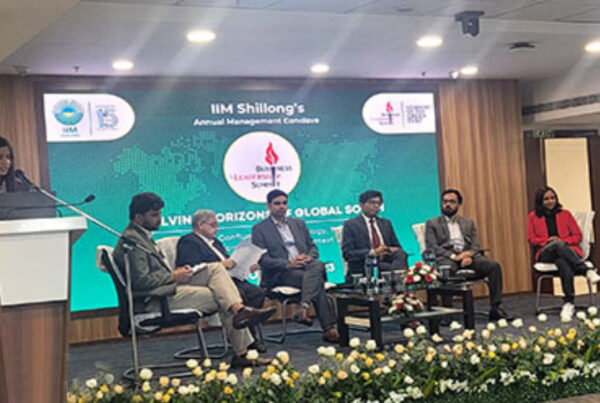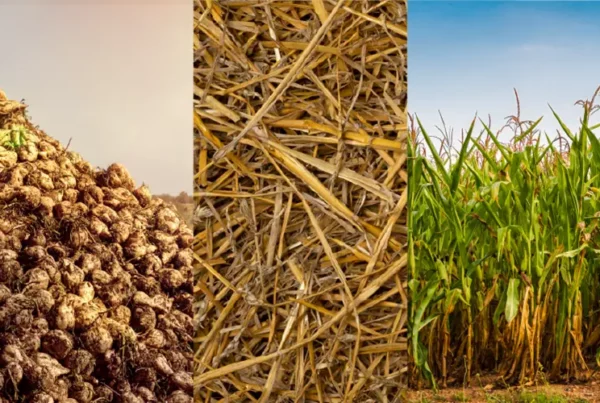1. Pharmaceutical Packaging Industry In India
India hold a prominent place in the global pharmaceutical market and is rapidly increasing its presence in the same. The country is the largest supplier of generic medicines across the world and also caters to nearly half of the global demand for vaccines.
Packaging plays a very crucial role in the pharma industry by connecting the suppliers with the end users. The Indian pharma packaging industry is changing rapidly and increasingly becoming more patient-centric. In the coming future, the industry is expected to become more value driven by focusing on innovation.
Pharmaceutical packaging includes different components and consists of various layers that surround the primary product from production to usage. Packaging ensures the protection and safety of pharmaceutical products by maintaining their efficacy and integrity. It also enhances convenience, appeal and identification across different methods of administration.
Primary packaging is the material that is in direct contact with the pharmaceutical product. It is also known as retail or Point of Sale packaging. Primary packaging ensures protection of the product during sale, storage and consumption by the user. Types of primary packaging includes ampoules, vials, blister and strip packaging, containers, syringe and sachets. Materials for primary packaging include glass, plastic and metal for example plastic or glass bottles for dry/liquid syrup, aluminium foil and PVC/PVDC for tablets and aluminium seals and rubber stoppers for injections and vials.
Secondary packaging is the layer outside primary packaging and is typically used for grouping of primary packages. It is typically used for branding and makes it easier for retailers to handle and display products. Paperboard is the most common material used in secondary packaging.
The application of tertiary packaging is in bulk handling for transport shipping and warehouse storage. Tertiary packaging materials include cardboard and plastic shrink films.
The Indian packaging industry comprising of both, domestic and foreign companies, have supported the growth of the pharmaceutical industry in the country. The key factors that have driven the industry growth include:
a. Increasing domestic demand
While pharma exports have been stable since last three years, domestic market has been growing at an annual growth rate of between 9 and 12%. It is expected that this growth momentum will continue in the coming five years. Government focus on expanding healthcare access, improving drug affordability and disease prevalence will expand the domestic market. The Indian pharma industry’s focus on expansion in new markets and operational excellence will also sustain the industry’s strength in the global market.
b. Rapid Evolution in product portfolio composition
Traditionally, nearly 80% of the production by the Indian pharmaceutical industry is oral solids in the form of capsules or tablets. These are either fed in HDPE bottles or packaged in pre-formed blister packs. However, the portfolio composition is changing rapidly with several other formulations involving injectable drugs, transdermal and inhalation gaining prominence. With high value complex molecules increasingly being part of oral tablets, packaging requirements for these have become highly specialized. This portfolio transformation will significantly impact the pharma packaging industry but would also lead to an increase in value realization with more complex products being offered.
c. Good distribution practices (GDPS) and serialization
Packaging plays a key role in assuring product integrity and ensuring patient safety. Several geographic markets have mandated adoption of GDPs by exporters with respect to the movement and storage of pharmaceutical products. Serialization enables tracking and tracing of drug at each point of the supply chain. Increasing compliance requirements for these GDP and serialization will support market expansion and bring in greater consistency in packaging solutions.
Going forward, the pharma packaging industry is expected to witness strong growth driven mainly due to the following factors:
- increasing compliance requirements across key markets and
- higher spending on packaging because of fast evolving product portfolio and its composition
2. Innovation In Indian Pharmaceutical Packaging Industry
Pharmaceutical companies have traditionally focused more on product development for competitive advantage compared to packaging which is viewed in a more functional role. However, rising competition has resulted in companies increasingly considering packaging as a key marketing tool.
Innovation in packaging play an important role in highly regulated pharma markets as it enables the industry to meet regulatory challenges as well as offers competitive edge. It is more relevant for India since the country is evolving as the leading supplier of quality generics but is also facing rising competition and regulatory challenges globally.
Looking forward, continuous pursuit of design and material innovations and integration of technologies will be the key differentiators in the pharma packaging industry. Developments in the pharma industry are driving innovations in packaging encompassing therapeutic areas, applications, materials and processes across the various packaging levels.
3.1 APPLICATIONS
3.1.1 PATIENT SAFETY, CONVENIENCE AND COMPLIANCE
Child resistant and senior friendly packaging
Child resistant packaging is one that is difficult for children of age less than 52 months to open but is easy for adults including geriatrics to open and use properly. Pharma products need child resistant packaging as it prevents misuse or accidental consumption by children. Since the introduction of child resistant packaging, it has evolved and matured to a degree that it has become an effective and acceptable product in several markets including the USA, EU, Canada and Australia. It is also being rapidly accepted in China, India and other countries. Locked4Kids
Innovative solutions in this area include “Locked4Kids” package developed by Ecobliss in partnership with Romaco Promatic. It is a recloseable folding carton that is made from laminated paperboard which is tear resistant and PET blister tray. Small hooks on both sides of the blister tray lock it in place and can be removed with simultaneous release of both hooks. This makes it very difficult for children to open it but is easy for adults.
Amcor introduced “Amcor Opening Feature” for child resistant blister lidding. With AOF, contents of the blister can be accessed easily with a directed push-through motion as against the traditional peel-push or peel method. AOF enables use of 2-ply structure instead of the standard 3-ply structure, thereby offering sustainability benefits in addition to child resistance. Other benefit includes up to 40% reduction in the package sizes compared to the peelable and peel-push blister cards resulting in reduced cost.
Indian packaging major Uflex has also introduced child resistant & senior Friendly (CRSF) foils which are of two types: peel-push and push through.
Wallet pack
PerfpakIn case of blister cartons, drug information is frequently lost once product is removed from the box. Wallet cards make it possible to include various options like product information, dosage directions and possible side effects. This is especially important and useful in case of drugs with long term usage and chronic drugs.
An innovative example in wallet pack is “PerfPak” by WestRock. The package design comprises of blister with a calendar that facilitates pill protection, provides dosage information and enables patients to track medications easily.
Such innovations are relevant in markets like Europe where blister packaging usage is high or where opportunities exist for branded generics.
3.1.2 SMART PACKAGING
Smart packaging is more than the combination of packaging materials with traditional barcodes and printed graphics. It is an intelligent system that can carry out wide range of functions including sensing, detecting, recording, tracing and communicating that helps in decision making. It provides information, enhances safety, improves quality, increases shelf life and warns about potential problems.
Global pharmaceutical industry is increasingly being driven by safety and ability of pharma products to communicate and connect with users. Smart packaging involves technologies such as Radio-frequency identification (RFID), Quick Response (QR) codes, Integrated Circuits (ICs), Near Frequency Communication (NFC) and so on. Smart packaging is about making operations easy for companies and consumption for users. For companies, smart packaging provides data and helps in monitoring of the products in the supply chain till it reaches the patients. For users, smart packaging facilitates authentication of drugs through self-verification by smart phone and increases patient compliance to prescribed medicines.
An example of smart packaging innovation is the launch of “ActiveGuard CONNECT” solution by LOG Pharma Packaging, an Israeli company. The solution incorporates a desiccant chamber in an IOT component that is synchronized and linked with a user’s smartphone. This smart packaging provides information on doses taken, alerts the user for dosage adherence and tracks the bottle temperature. The solution also supports Big Data analysis by capturing real-time and historical data for tracking compliance and provides an opportunity for companies to improve the drug efficacy and engage with customers for building long-term relationship.
3.1.3 ANTI-COUNTERFEIT PACKAGING
Tamper evident packaging
According to the World Health Organization (WHO), the annual trade in counterfeit medicines is a staggering EUR73 billion1. Tamper evident packaging comprises of technologies such as holograms, RFID, barcodes, invisible printing, sealing tapes etc. to maintain pharma product integrity.
Tamper evident Italian company IGB introduced a tamper evident folding carton with a mechanism that immediately confirms of tampering or opening of the box. When opened first, a seal is removed displaying a colour and revealing change in shape of the original box
Serialization and Track and Trace
To tackle the growing problem of drug counterfeiting, several regulating agencies across the globe have made serialization mandatory enabling tracking and tracing of drugs at each point in the supply chain. The USA was a leader in establishing serialization roadmap for achieving end-to-end traceability. The EU has made dispenser authentication and unit-level serialization compulsory from 2019. Starting 2020, Russia which is a key export market for Indian pharma companies, has also introduced compulsory track and trace. Countries like China, Brazil, Turkey etc. require serialization and track and trace at the product level. In line with the regulations, Indian pharmaceutical companies have adapted to the serialization requirements. However, there is scope for innovative solutions in this area.
Schreiner MediPharm introduced a track and trace solution to protect the supply chain. The company developed a new label that combined several digital security elements. First is the “KeySecure” tracing system uses a 15-digit alphanumeric code that can authenticate any marked product at every level of distribution. The other is an “NFC chip integrated in the label” that allows identification and digital authentication via a smartphone, thereby preventing counterfeiting.
3.2 MATERIALS
3.2.1 SUSTAINABLE PACKAGING
Sustainable packagingSustainable and eco-friendly packaging are becoming prominent as concerns about the environment are increasing. Companies are trying to reduce carbon footprint by using more recycled materials thereby reducing the use of virgin materials in packaging.
DS Smith, a UK based packaging company, has developed a solid board package for anti-allergy kits replacing plastic. The package that is eco friendly holds the kit contents including syringes, vials and leaflets for anti-allergy treatment.
3.2.2 COST OPTIMIZATION
Cost optimization
India is a major player in the global generics market. With continued pressure on pricing in the generics market, Indian companies will focus on innovations in packaging materials that provide cost advantage.
ACG has come up with laminates of PVC/Aclar/PVC and PVC/EVOH/Aclar that improve operational flexibility while reducing packaging cost and leading to improvement in profitability.
Another example of material innovation is “BlisterEco” by Constantia which combines Aluminium and tissue paper making it less expensive than the Aluminium lidding foil as it is 23% lighter. It provides effective barrier against water vapour, excellent printability and is also more sustainable.
3.2.3 BIOLOGICS
Biologics have huge potential in future but need to be produced in small batches as these are extracted from living organisms as against chemical synthesis. As biologics differ vastly in structure, generic biologics require customized packaging solutions. Packaging of biologics is challenging as these are sensitive to temperature and prone to contamination. Conventional packaging materials like plastics, glass and rubber are unsuitable because these can degrade protein structure of the biologic. As such, biologics would witness great deal of packaging innovation to ensure their effectiveness. New materials such as cyclic olefin polymers (COP) and fluoropolymers are helpful in maintaining the quality of biologics as these don’t use stabilising agents that can degrade biologics. Biologics
West Pharmaceutical Services designed “SmartDose”, a wearable injector that can administer viscous biologics sensitive to metal ions and glass, over longer duration of time. COP material is used to make primary containers while the syringes and cartridges are moulded from COP. These are free of tungsten and silicon oil, are break resistant and provide predictable and consistent gliding forces. Rubber components are laminated with a film which provides protection against extractables as well as necessary lubrication.
3.3 PROCESSES
3.3.1 3D PRINTING
3D printing has the potential to design improved packaging to cater to the demand for increasingly customized medicines. The technology is increasingly being used not only for making early prototyping or for evaluating new technology but also for creating initial packaging solutions. 3D printed components can be used in the creation of the final package. 3D printing can be used for different materials and in several ways, right from concept development of a package to its commercialisation. 3D printing enables users to run a packaging line to understand its efficiency and cost-effectiveness.
Baxter used 3D printing for creating prototype of a secondary package made from plastic for holding glass vials to improve security and safety during shipping. The company also used 3D printing for a prototype that held syringes firmly in place thereby preventing the movement of the plunger device.
3.3.2 BLOW FILL SEAL (BFS) TECHNOLOGY
BFS technology has been used for filling ampules and containers with liquid dosages. The process of BFS packaging is automated and eliminates risk of contamination and breakage, common in conventional fill-finish process. The process is also aseptic and is thus suitable for filling injectables from the biologics group. BFS is useful for making multi-dose injectable containers as well as unit dose injectable containers of unusual shapes. New developments in drug delivery, focus on combination products and increasing emphasis on biologics will create further opportunities for this technology.
ApiJect is a compact prefilled auto-disable device (cPAD) for dispensing single dose of vaccine. It is made with BFS technology and consists of three parts: plastic bubble container, container mount and an attachable hub for a needle. A BFS machine makes the LDPE container, fills it with the vaccine and seals it in a continuous aseptic process.
Innovation in pharma packaging industry is a result of pull and push by pharma companies and their suppliers. In house packaging departments in Indian pharma companies are proactively driving packaging design innovations in partnership with material suppliers who continue to enhance properties of packaging materials through innovations in materials. Going forward, the focus innovation will be areas of safety, compliance and new formulations and would encompass packaging design, materials, production processes, contemporary technologies and integration of these elements in drug delivery.
Author : Niranjan Natu
Niranjan has over 18 years of experience in industry and management & consulting. He has significant experience on advising Indian and foreign clients in the areas of strategy development and implementation including market and opportunity assessment, feasibility studies, entry strategy and growth strategy and balanced scorecard.
Niranjan has been involved in consulting projects across diverse sectors including Manufacturing/Industrial Products, Greentech/Cleantech, Engineering, Infrastructure, Aerospace & Defense and IT/ITES.




